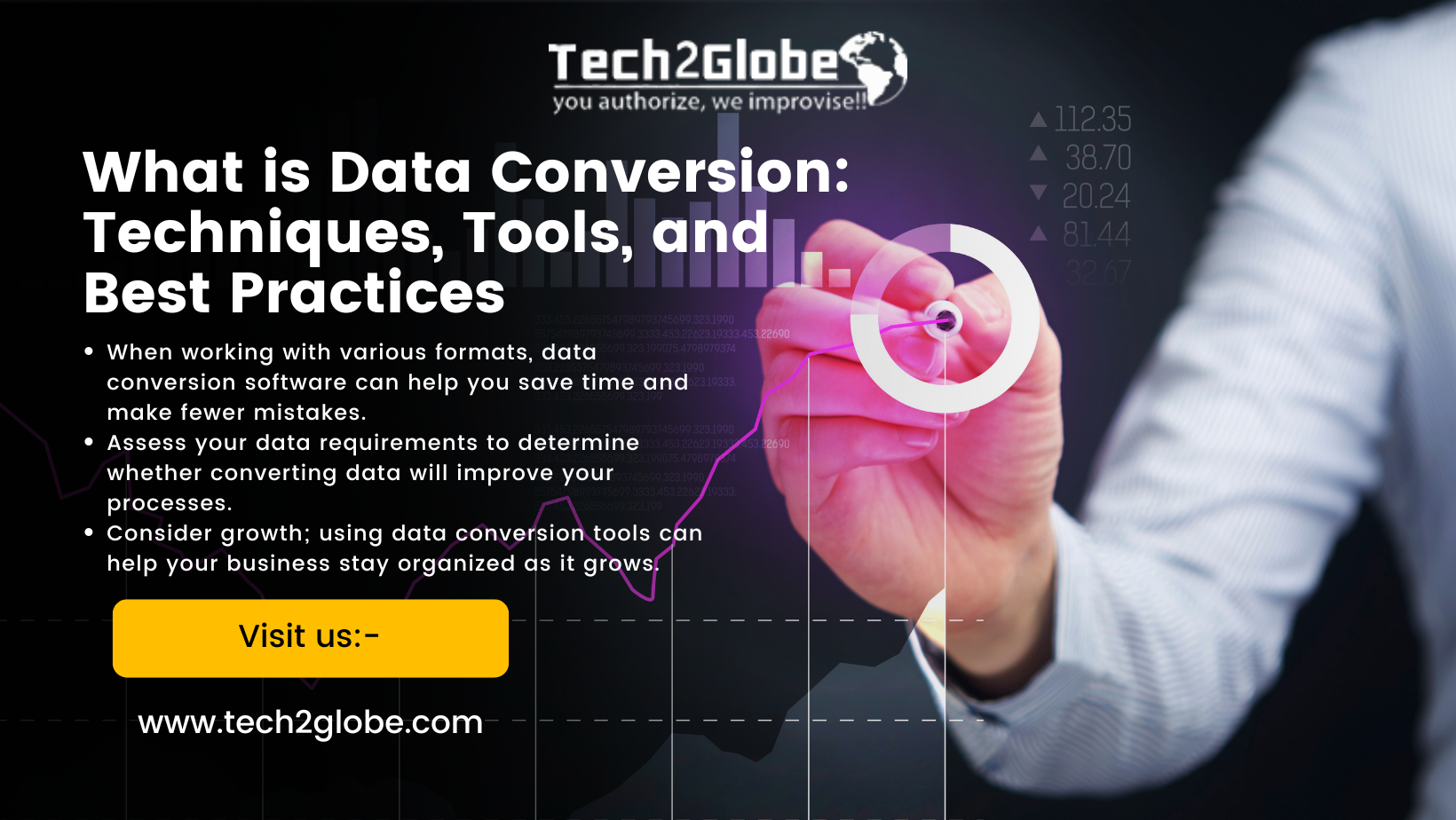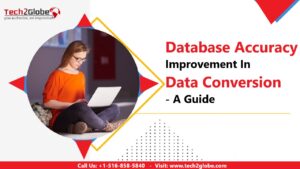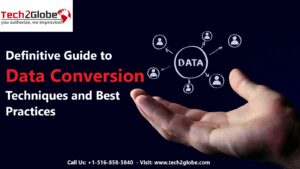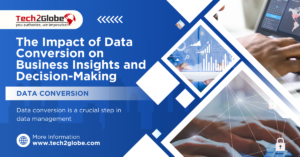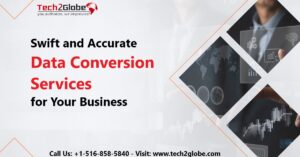Summary: This blog covers everything you need about data conversion, including its types, benefits, and challenges. Also, learning how to convert to data using different techniques and tools can help your business grow and succeed. Don’t forget to check out the best practices to face data challenges.
Key Takeaways
- When working with various formats, data conversion software can help you save time and make fewer mistakes.
- Assess your data requirements to determine whether converting data will improve your processes.
- Consider growth; using data conversion tools can help your business stay organized as it grows.
Data Conversion has intriguing facts that are hard to ignore. For instance, the global data conversion service market is expected to grow significantly from 2022 to 2030 because of data-driven strategies adopted by businesses of all sizes. As a result, the data conversion services market could reach USD multi-million by 2029 due to its strong CAGR.
Are you wondering how this will impact your business? Imagine you have access to customer insights, market trends, and operational errors. However, having a deeper understanding of all this information lies in how you convert it to data, especially when all of it is in different languages! Here, data conversion can help to translate the same information into a clear, unified language. However, it can do more than just that; continue reading to know more about the conversion of data.
What is Data Conversion and its Types?
Data conversion refers to the process of converting data while maintaining its accuracy and integrity. It can be complex or simple, depending on the amount and variety of data types involved. However, each conversion effort is unique.
Types of Data that you can convert:
Structured data: A particular format or model—like those found in relational databases—is defined here. Examples comprise XML documents, CSV files, and SQL data. Additionally, structured data is the easiest to convert because its format is predictable and consistently ordered.
Semi-structured data: Follows particular guidelines that allow it to be converted even if it is not as orderly as structured data. Because they have tags or markers to split semantic elements, formats like JSON or YAML fit this group.
Unstructured data: From text files and emails to multimedia content, it comes in many forms. Although unstructured data lacks a predefined data model, its conversion is more complex; nevertheless, advanced parsing and processing methods make it possible.
Files in a binary format: Images or compiled programs—may also be converted. Usually, the process consists of encoding or decoding to translate binary data into another binary format or from binary data to text formats and vice versa.
What are the Benefits of Data Conversion?
While conversion of data is used to update or migrate databases to newer formats, its advantages extend far beyond that.
- More excellent quality of the data.
- Cost Savings
- Increases the efficiency of the operations.
- It is possible to simplify data that is both large and complex.
- It makes the database accessible to the user.
- Allows for the saving of time.
- Examining structured data is one method that can be utilized to gather business intelligence.
- That could potentially increase the profitability of the company.
- The loss of data and breaches of data can be avoided.
The Process of Data Conversion
As you may have understood, conversion of data is the method of transforming data from one form to another. Although it can be difficult, using automated tools speeds things up and increases accuracy. Here’s what the process may involve, generally:
Planning the Conversion: A thorough plan built on the user’s requirements comes first. This proposal lists the data that needs to be converted, from which it is coming, and what form it should be in the following conversion.
Extracting the Data: Once the plan is in place, the data is pulled from its source. This involves copying the information, including letters, numbers, and symbols, from the old system.
Transforming the Data: After that, the extracted data is changed/converted into a format that matches the format of the new system. This includes changing how you write dates, adjusting numbers, or restructuring information.
Loading the Data: The converted or new data becomes part of the new working method.
Data Conversion Challenges and Best Practices
These are some of the main obstacles companies usually face during the conversion of data, and some solutions are available to deal with them efficiently.
Loss of Data
Problems with transformation, insufficient backups, or human mistakes can all lead to data loss during conversion. Therefore, you must proactively address this issue by implementing thorough data backups, rigorous testing, and detailed audit logs; otherwise, the entire exercise could become useless.
Transforming and Mapping Data
Transforming data from one format to another can be daunting, especially when dealing with numerous systems or databases. What can you do? It is best to conduct comprehensive planning, documentation, and monitoring to ensure accurate data interpretation.
Problems with Compatibility
Format or structure changes can interrupt processes, so businesses must ensure that converted data is compatible with target systems before beginning data conversion. Also, you should upgrade your system later on and do extensive testing.
Security Concerns with Data
Lastly, data quality issues can occur during data movement or conversion. Thus, applying data governance best practices in conjunction with thorough validation and quality checks is the most excellent approach to reducing risk.
Limitations on Time and Money
Time and money are two of the most common constraints on data conversion projects. There is a higher chance of data-related issues, and efficient use of resources is required when projects are rushed.
Data Conversion Techniques
Changing data calls for more than one step and sequence. Therefore, companies apply several methods to modify, enhance, and translate their data. The most often used techniques consist of:
File Format Conversion
Changing the method of storage calls for translating between several file formats. To facilitate analysis, for instance, translate a spreadsheet file—such as Excel.xlsx—into a database file—such as.csv.
Character Encoding Conversion
Computers represent text characters using several systems. Moreover, changing between these systems—from Latin-based English to Asian languages—guarantees accurate text display and handling.
Date and Time Formatting
Data analysis and reporting depend on standardizing how dates and times are listed. This entails altering formats from “2023/11/25” to “November 25, 2023.”
Unit Conversion
When data includes measurements, you usually need to convert between various units—like inches to centimeters or pounds to kilograms—for consistency and compatibility.
Numerical Data Conversion
Changing the representation of numbers can affect calculations and data interpretation. For more exact computation, for example, converting a whole number to a decimal.
Data Type Conversion
Some operations depend on changing how data is categorized—from text to numbers or vice versa. For a “yes/no” text field, translate it into a true/false value.
Data cleaning
It is all about correcting mistakes, inconsistencies, and missing values. This can also cover handling outliers, standardizing data forms, and deleting duplicates.
Error Handling
Dealing with unforeseen problems during data conversion is crucial. Thus, error handling techniques—such as recording mistakes for later inspection and repair—help preserve data integrity.
Data Conversion Tools
Data conversion software can improve data profiling, business research and planning, and the speed of complicated transformations. We can generally classify these instruments into three categories:
Scripting Tools: Scripting tools lay at the core of data conversion techniques. They cover methodical data manipulation using Python or SQL scripts. However, scripting demands in-depth technical knowledge and can be time-consuming for large datasets, offering exact control over the conversion process. Thus, this approach is best for smaller-scale or highly specialized data transformations.
On-premise ETL Tools: These instruments, stored in the server of the business and local registering system, automate the continuous data normalizing process and replace the necessity for code writing. The data conversion services company has to get a license or buy a copy from the software vendor to apply these data conversion tools.
Cloud-based ETL Tools: Finally, scalable and reasonably priced alternatives are cloud-based ETL tools. Organizations can access strong data conversion capabilities free from the weight of managing on-site hardware and software by using the cloud infrastructure and knowledge of the software vendor. Companies looking to quickly expand their data operations or those with variable data volumes will find this method especially helpful.
Are Data Conversion Tools Worth the Investment?
Honestly, it depends. A few essential considerations help determine whether data conversion tools are worth the expenditure. First, what type of data do you handle? Text, pictures, or something else? Conversion is useful to maintain everything operating in different formats.
Think then about how you combine data conversion software across several platforms. Do you now use several databases or programs? By guaranteeing everything fits together naturally, data conversion can help. Have you thought about the time and effort automated process saves?
Finally, is your present scalable approach? Could it expand with your company? If not, a tool purchase may be the solution. Analyze the expenses against the advantages—time savings and error avoidance, among other things.
Is it hence worth it? If these points speak to you, the response might be yes.
Conclusion
Whether your organization is dealing with structured or unstructured data, we manage data quality and guarantee accurate, consistent, and error-free data conversion.
Our team converts documents and images by offering you powerful conversion features that provide a comprehensive range of data conversion services and ensure accurate data entry.
However, we go beyond essential services by offering data management, extraction, and online data entry services. You can count on us to turn your data into something valuable for your business’s growth.

Sahil Verma is a strong pillar of Tech2Globe’s success. As Vice President of Sales, he has played a pivotal role in the company’s growth for over the years. His expertise spans across web, mobile, and software development consulting. With his experience of 15+ years he leverages cutting-edge technology to help businesses build revenue-generating applications. Known for his client-centric approach, Sahil has a knack for understanding each business’s unique needs and offering them prompt solutions. This allows him to recommend technology solutions that enhance their intelligence, efficiency, and ultimately, profitability.




